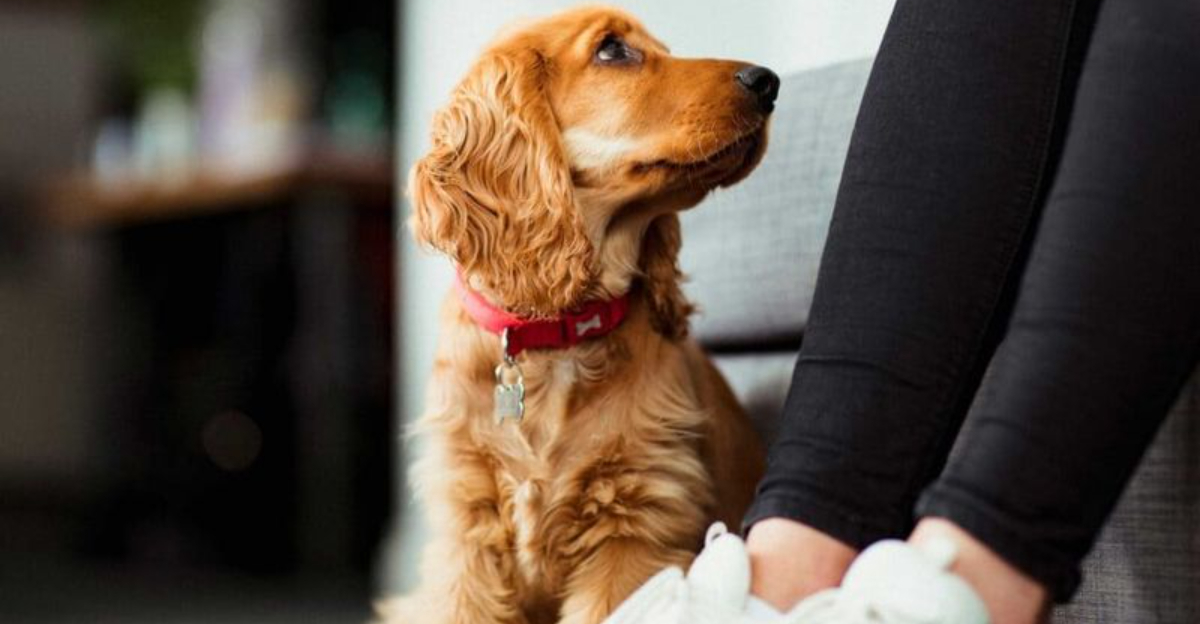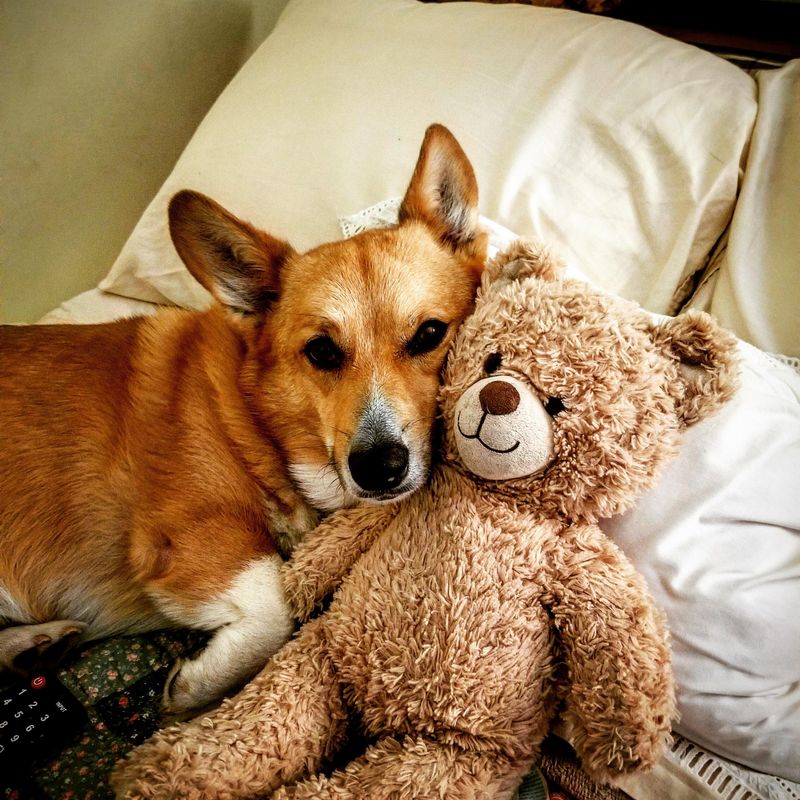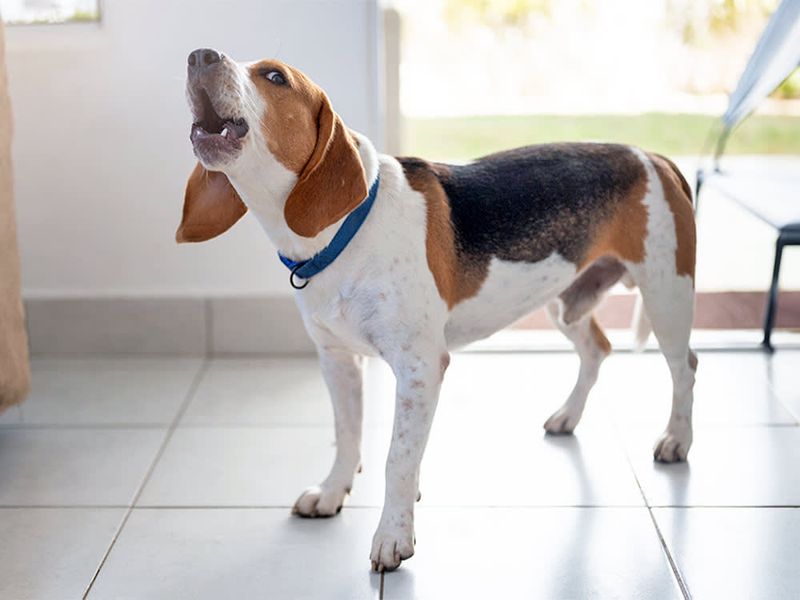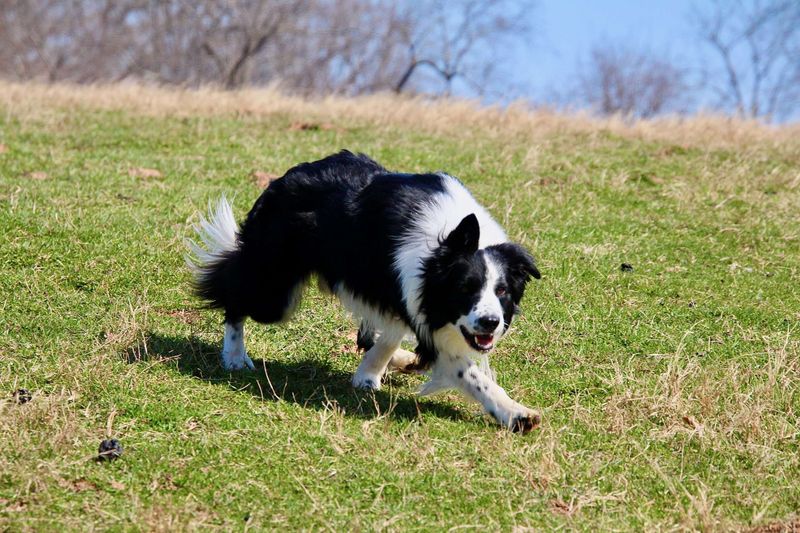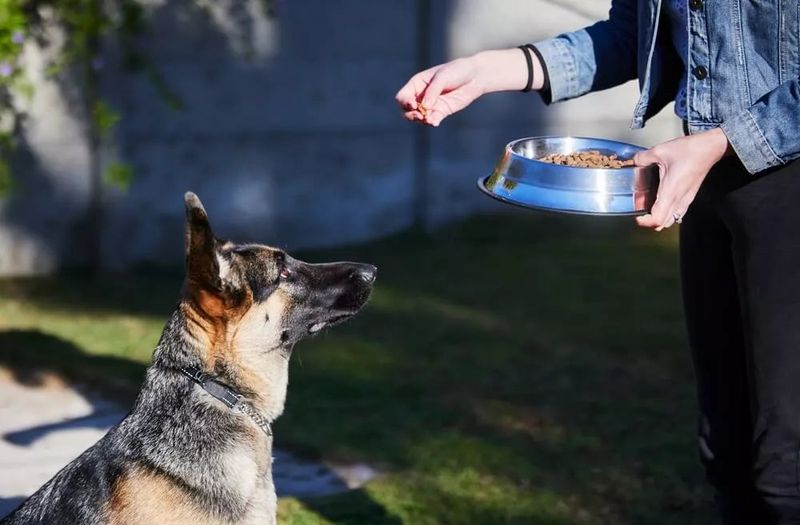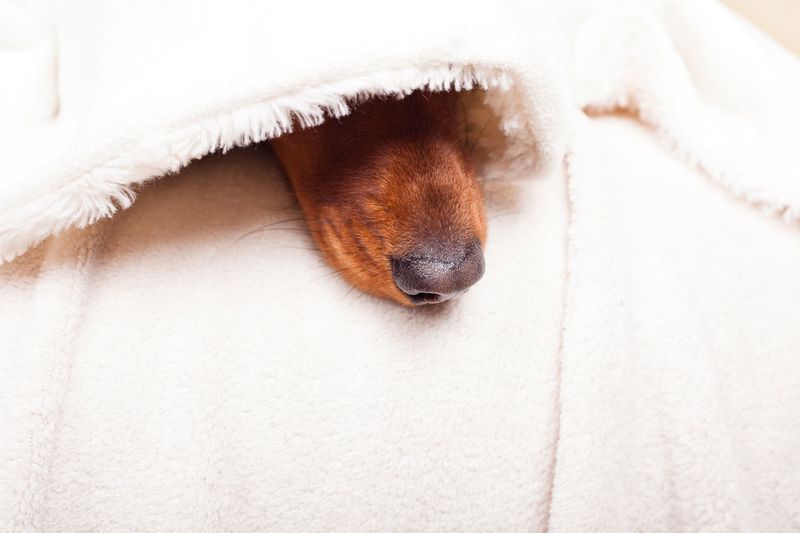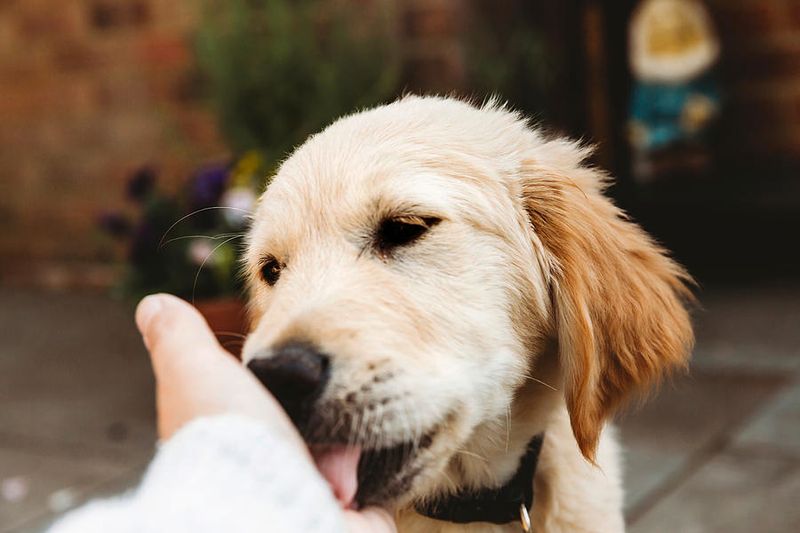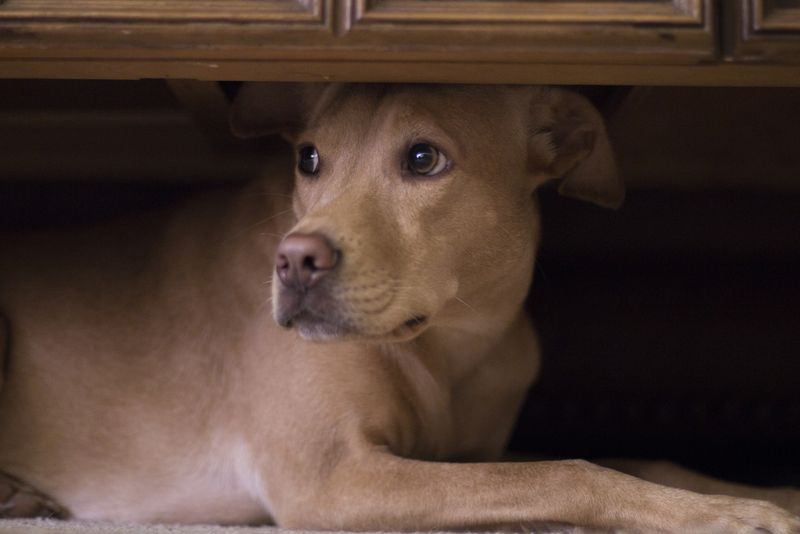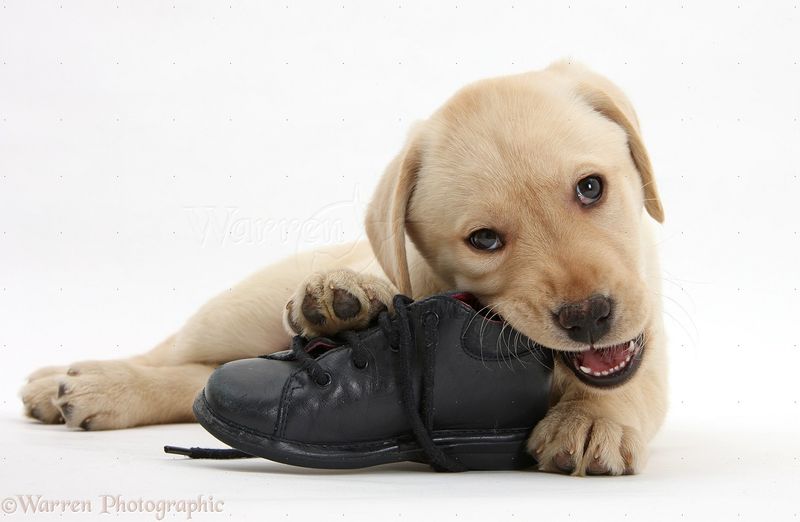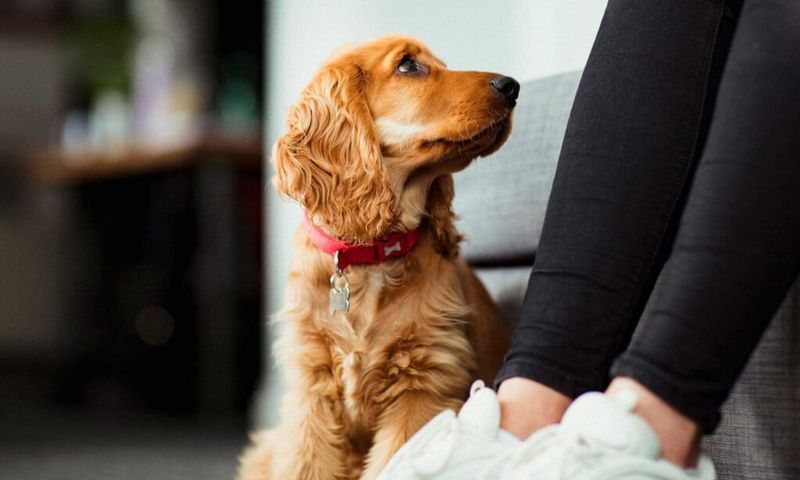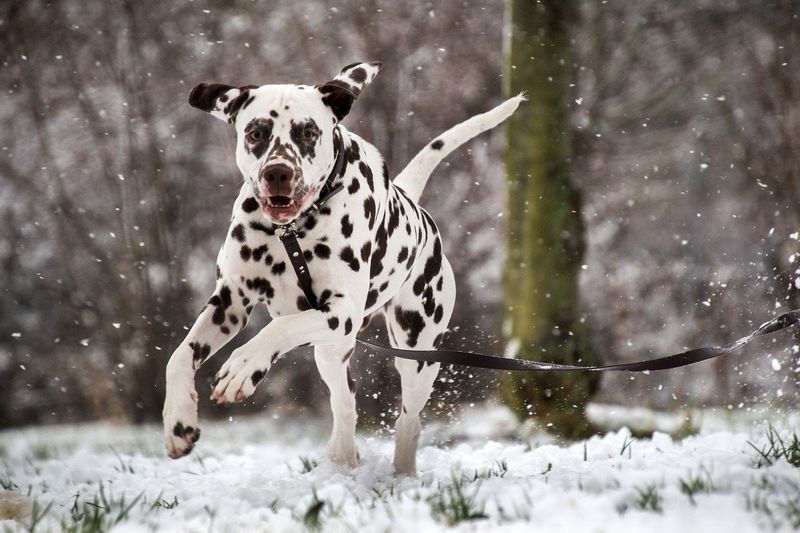Dogs have an uncanny ability to sense changes in their environment and routine. Whether it’s a move to a new home, the arrival of a new family member, or even a change in the weather, dogs often exhibit unique behaviors right before these major life changes occur. Understanding these behaviors not only helps in catering to the dogs’ needs but also strengthens the bond between humans and their furry companions. Let’s explore these fascinating canine behaviors.
Increased Snuggling
When a big change is on the horizon, dogs often become extra cuddly. This might be their way of seeking comfort or providing it. Imagine your furry friend curling up like a fluffy pillow next to you, sharing warmth and reassurance.
Interestingly, this behavior isn’t just for your benefit. Dogs, with their keen sense of smell, might detect subtle emotional shifts in their human companions and respond with snuggles. It’s a heartwarming scene, especially as they gaze up with those soulful eyes.
If your dog suddenly craves more snuggle time, it might be gearing up for something new.
Frequent Barking
Does your usually quiet dog start barking more frequently? This could hint at upcoming changes. Dogs have heightened senses and might notice disturbances imperceptible to humans.
A bark can signal alertness. Picture your Beagle at the window, ears perked, barking at something only it can perceive. This behavior, while alarming, can be their way of expressing concern or readiness.
To address this, engage in calming activities. A soothing voice can assure them everything is under control. A little understanding goes a long way in easing their worry during uncertain times.
Pacing Around
Pacing is a tell-tale sign something’s amiss. Dogs often pace when they sense change, as if trying to figure out what’s happening. Picture a Border Collie, tail low, meandering through a sunlit garden.
This act of movement helps them cope with anxiety. It’s similar to humans taking a walk to clear their heads. However, if pacing becomes excessive, it might be time to provide some extra care.
Engage them with attention or a favorite toy. Sometimes all they need is reassurance that their world remains safe and secure despite impending changes.
Clinginess
Clinginess often precedes major changes in a dog’s life. If your pup suddenly transforms into a shadow, following you everywhere, it might be anticipating a shift.
This behavior stems from their need for reassurance. Imagine them trotting closely, eyes wide with curiosity and concern, never letting you out of sight, even in mundane tasks around the house.
While it can be endearing, ensure they feel secure. Spend quality time together to ease their anxiety. Familiar routines can provide a comforting anchor amidst uncertainty.
Loss of Appetite
A sudden disinterest in food can be worrying. Dogs might lose appetite when stressed or anxious about changes. Picture a German Shepherd sitting by a full bowl, staring blankly.
This isn’t unusual. Dogs, like humans, can experience stress-related appetite loss. It’s crucial to monitor their eating habits.
To entice them, try feeding smaller, more frequent meals or adding a favorite treat. If the issue persists, consulting a vet ensures there’s no underlying health concern beyond anxiety over environmental changes.
Hiding
When dogs anticipate a change, they might seek refuge in hiding places. A cozy spot under the bed or behind the couch suddenly becomes their safe haven.
Envision a Dachshund, only its nose visible, nestled under a blanket. This behavior is akin to children seeking comfort behind a parent’s leg. It’s their way of coping with anticipated upheaval.
While it’s natural, encourage them to explore their environment gently. Creating a calm atmosphere helps them adjust smoothly to whatever changes lie ahead.
Excessive Licking
Excessive licking can be a dog’s way of self-soothing. When feeling uneasy about changes, dogs may lick themselves or their humans more frequently.
Imagine a Labrador Retriever in a sunlit park, gently licking its owner’s hand. This repetitive action can offer comfort, much like a child holding a security blanket.
While it’s generally harmless, if it becomes obsessive, provide alternative comforts like chew toys. Interaction and reassurance are key to keeping their anxiety in check as they sense life’s ebbs and flows.
Restlessness at Night
Restlessness at night is a common sign of impending change. Picture a Husky shifting positions repeatedly, eyes open and ears alert, as moonlight filters through the window.
This nocturnal activity can be a response to their heightened awareness. Dogs might sense something different and respond with sleepless nights.
To help them, ensure they have a comfortable sleeping area and a routine that promotes relaxation. Calming sounds or scents can also work wonders, providing the peace they need to rest easy.
Chewing on Objects
Chewing can signal nervous energy in dogs anticipating change. Imagine a playful puppy, eyes glinting mischievously, gnawing on a forgotten shoe amidst scattered toys.
This behavior, while destructive, is their way of releasing tension. It’s similar to humans fidgeting under stress.
To prevent unwanted chewing, provide sturdy chew toys. Redirecting their focus can protect household items and ease their anxiety. Engage them in active play to channel their energy productively.
Digging Holes
Digging is more than just a pastime for dogs. When anticipating change, this activity can intensify. Picture a Terrier in the backyard, dirt flying as it digs with focused intensity.
This behavior might be their way of dealing with stress or seeking comfort in familiar actions. It can be likened to humans rearranging furniture when anxious.
To manage this, provide a designated digging area or engage them in mentally stimulating activities. This helps channel their energy positively while acknowledging their natural instincts.
Whining
Whining can be a dog’s way of expressing unease. A Cocker Spaniel might sit by the door, ears drooped, releasing soft whines as it senses change.
This vocalization is their call for reassurance. Dogs might feel something is off and communicate through these plaintive sounds.
Responding with gentle words and caresses can offer comfort. Ensuring their routine remains predictable helps ease their uneasiness. A little extra attention during these times can make a world of difference.
Sudden Energy Bursts
Sometimes, dogs exhibit sudden bursts of energy before a major change. Imagine a Dalmatian darting around a park, its spots a blur in the bright afternoon sun.
This sudden vigor might stem from anticipatory excitement or nervous energy. It’s like a person going for a run to clear their mind before a big decision.
Channeling this energy through fun activities or games can be beneficial. It helps them expend excess energy and settle into new routines smoothly, making transitions less daunting.
